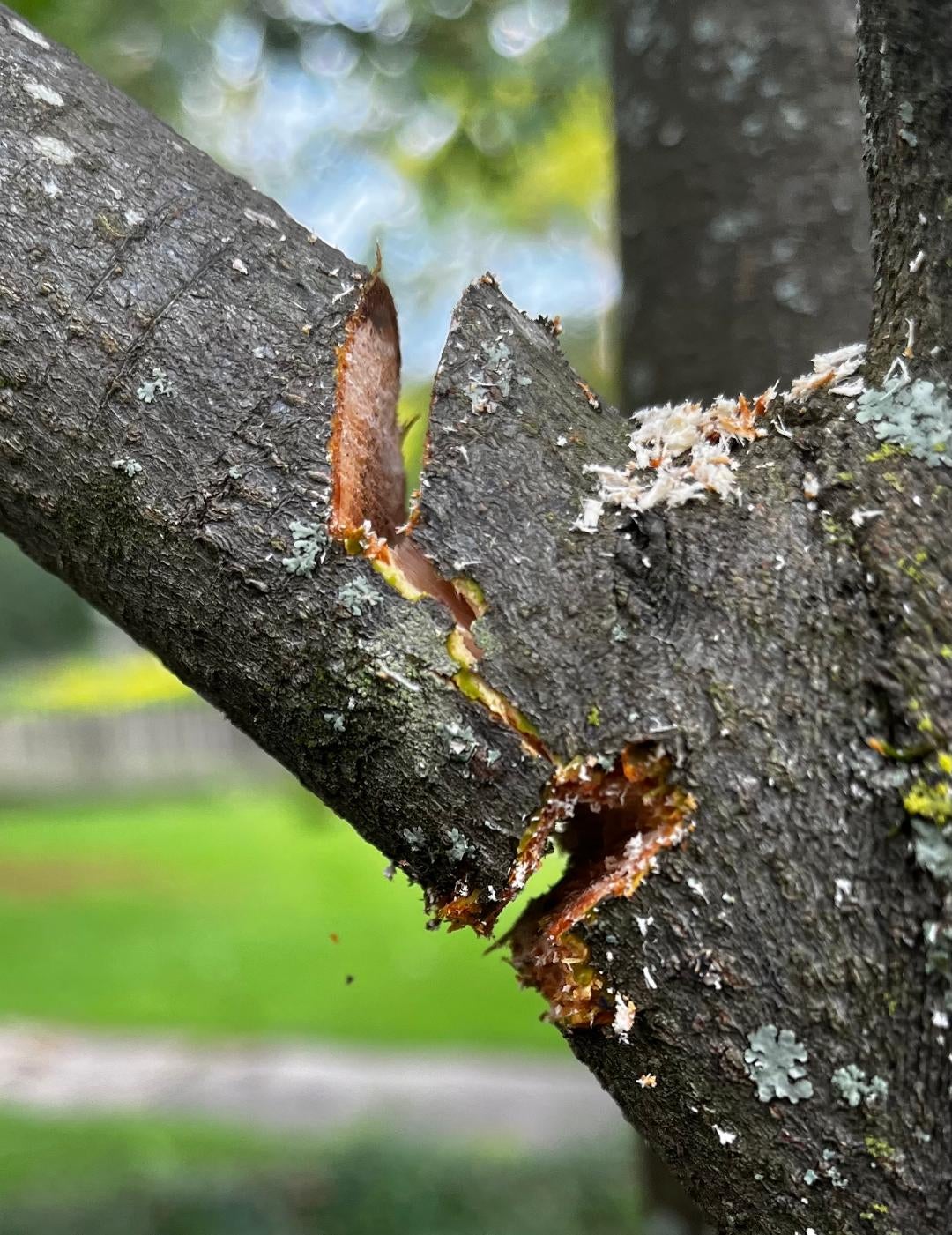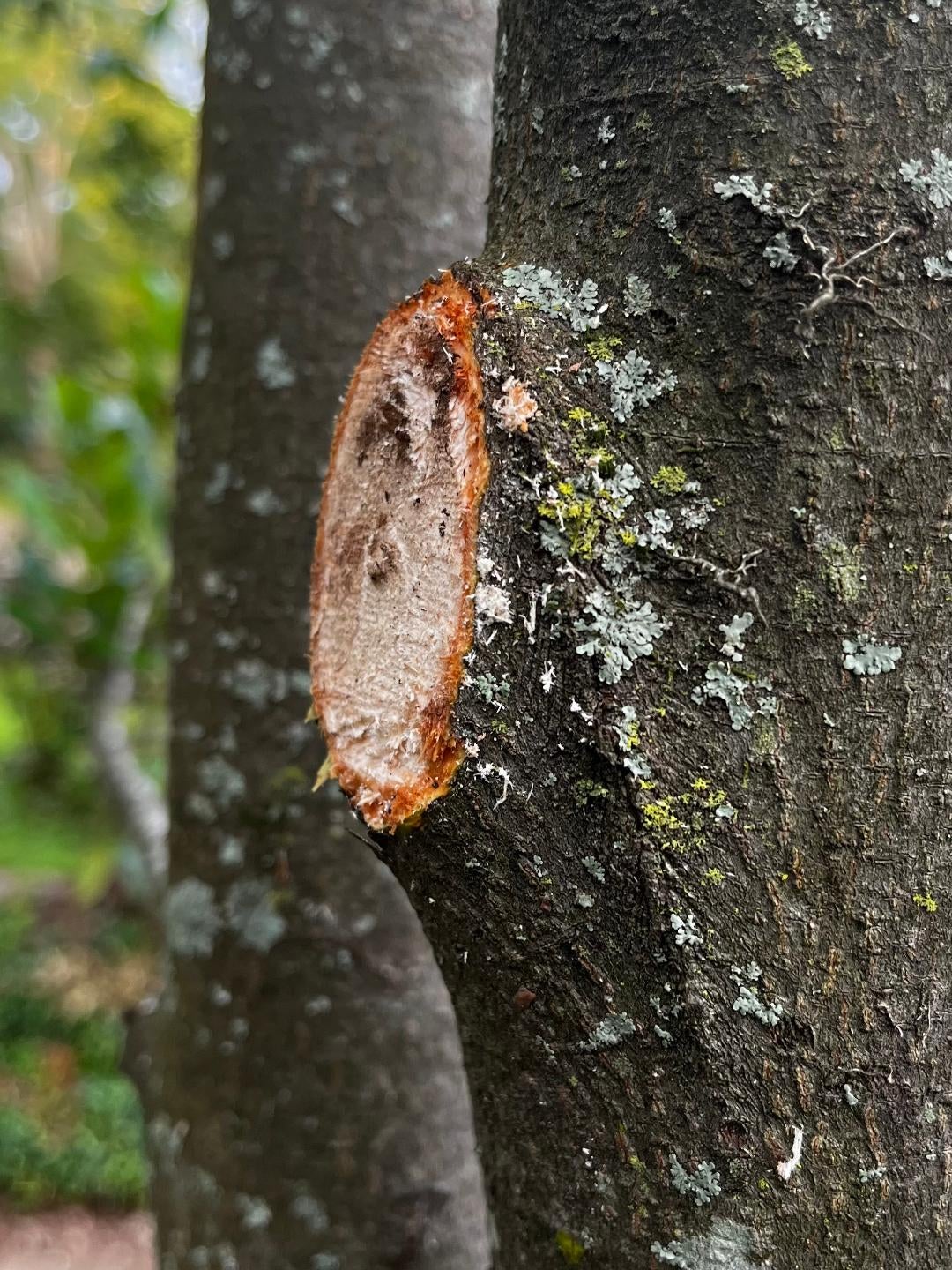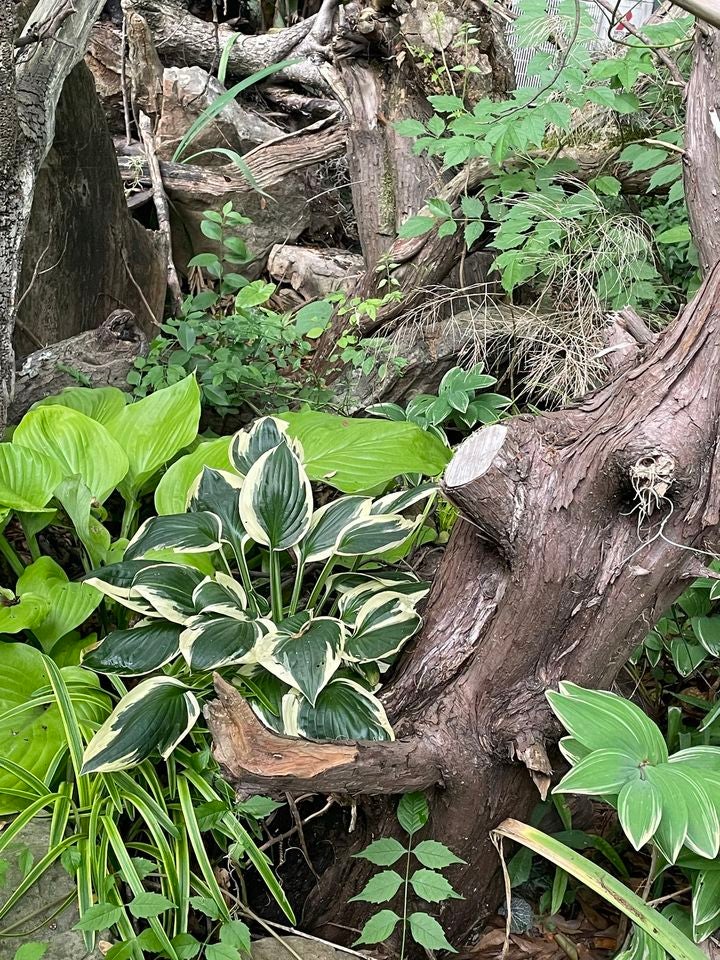Repairing Storm-Damaged Trees and Shrubs
Published 9:41 am Thursday, June 22, 2023
Picking up after big storms has always been the sad lot of gardeners. But though cleanup is frustrating and daunting, it’s still important, when possible, to repair what is left.
I was lucky when the big storms blew through last week, having had just a few big limbs crack off some trees, a couple of crushed shrubs, and a lot of flowers blown over. Some folks lost everything, including their homes; others were without power for days in the heat and stifling humidity. Utility companies, city employees, landscape workers, and neighbors jumped right in, cutting trees out of streets and houses. 
But, not to make light of the serious destruction, cutting done in haste, if not done right, can come back to haunt us for years. There is still time to prune broken trees and shrubs so they have the best chances to heal, minimizing otherwise certain internal wood rot decay.
Here, in a nutshell, is the way to do it if you are able; the gist is simple: Remove ragged broken parts, making the wounds smooth so they can heal quickly. This can be done so when the cut parts fall away they don’t strip bark down the trunks, and – crucially – without leaving stubs which will decay into the center of the plant stems.
To remove large limbs and branches, first make a small upwards on the underside of branches or limbs, a few inches out from the trunk; a fourth to a third of the way through is plenty. Then make a second downward cut two or three inches out past the first one, so when the heavy branch falls it will strip bark just back to the first cut. Then make a third cut to remove the stub. Don’t cut flush with the trunk, which makes a really large wound that can’t repair itself because healing sap flows down from higher up or farther out, and it won’t flow up into a stub.
 Cut as close as you can while leaving a little swollen “collar” where the limb joined the trunk. There is absolutely no need for pruning paints or other sealants – really; a proper cut will end up covered with bark, and within a couple of years or so you may not even notice the wound at all.
Cut as close as you can while leaving a little swollen “collar” where the limb joined the trunk. There is absolutely no need for pruning paints or other sealants – really; a proper cut will end up covered with bark, and within a couple of years or so you may not even notice the wound at all.
By the way, there is a silvery-lined opportunity here, for those open to new landscape ideas and allowed by neighbors to express them. Rather than haul off fallen limbs, create a wildlife habitat and even shrub beds by neatly piling fallen tree trunks, limbs, and other debris in a somewhat neat row along the property line, or out from a fence, or connecting tree trunks. Put logs and big limbs down first, then arrange smaller limbs and branches on top of those. Add fallen leaves, and perhaps plant a few clumps of monkey grass or other ornamental plants here and there to make it look purposeful.
Nearly everyone will recognize your efforts, but you can also add a scarecrow, bird bath, birdhouses on posts, or a neatly lettered sign that proclaims it Wildlife Habitat or even a Stumpery, which is a newly popular Victorian garden construction, exactly like a rock garden only using a jumble of interesting logs and stumps plus ferns, azaleas, and other woodland plants. You can learn more about them at FelderRushing.blog by scrolling down to the search box and typing in “stumpery.”
But for now, about all we can do is help one another pick up the pieces, then making sure broken plants are pruned so they have their best shots at healing.
Felder Rushing is a Mississippi author, columnist, and host of the “Gestalt Gardener” on MPB
Think Radio. Email gardening questions to rushingfelder@yahoo.com.





